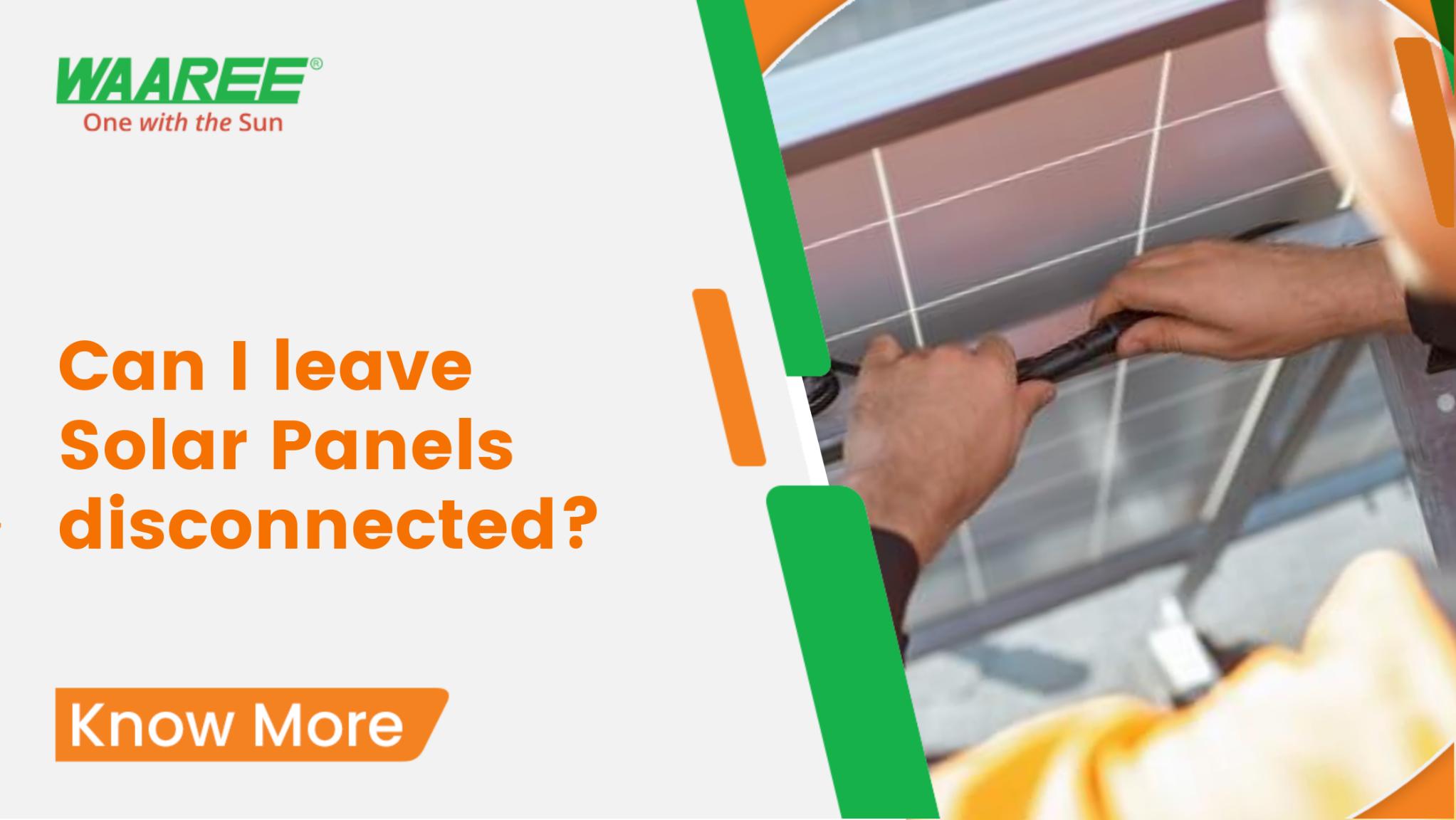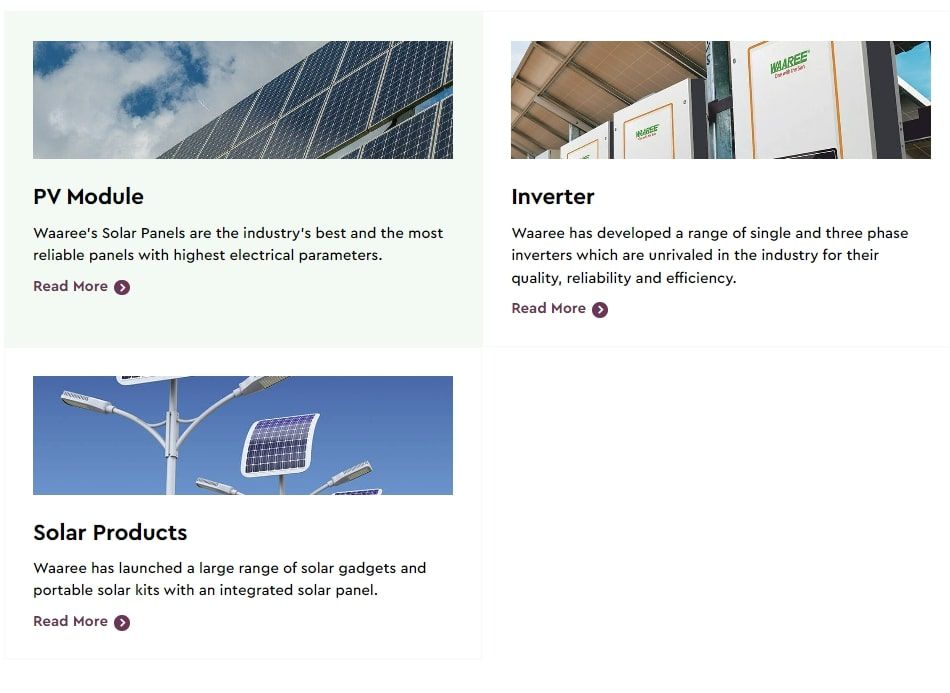











Planet Earth is blessed with an abundant source of Solar Energy, and its impact on the environment in order to attain carbon neutral/negative energy sources through Solar Power plants is paramount.
A lot of people these days are buying solar power plants while understanding the concepts of generating free electricity and having a positive impact on the environment at the same time.
Some of you might be wondering ‘what happens if I am away from my home for 5-6 months, do I need to disconnect the solar panels,’ ‘what happens if I am cleaning the solar panels, do I need to disconnect them’, ‘what happens if one of my panels broke, do I need to disconnect the entire string if solar panel.’
To answer your many questions let us understand the working of solar power plants.

Solar photovoltaic (PV) panels convert solar radiation into electricity using cells containing semiconductor materials. Silicon, a naturally occurring resource found in sand, is the most common semiconductor material. A certain amount of energy is absorbed by the semiconductor material when light strikes the cell, knocking loose electrons, the negatively charged particles that make up the electricity.
Solar modules generate direct current (DC), which has to be converted to alternating current (AC) before it can be used in a domestic building; this is done by an inverter. The AC electricity then travels through the generation meter, which measures the amount of electricity created, and on to the consumer unit, where it can be used in the installed site or can be exported back to the grid.
Yes, you can disconnect your solar panels and leave them disconnected as well, but we would like to share some light after reading that it might not make sense to you to leave your solar panels disconnected.
Disconnecting the solar panels still will generate electricity inside the solar panels if exposed to sunlight, which means the Voltage generated across that particular Solar Panel will be converted into heat. In normal circumstances, the surface area of a solar panel is designed in a way to dissipate this heat under extreme situations, but if left unchecked it can cause a fire.
Even if you are away from your home, you can still keep your system connected to the grid so that it continues exporting electricity to the grid and you’ll keep on receiving credits for your investment in that solar power plant.
During cleaning the PV system, it is recommended to switch off the entire system (only for residential rooftop solar – facts might differ in the case of utility-scale solar power plants), before you start cleaning the system, and then once the cleaning is done, again restart the system.
If your panel is broken then you must connect with your system installer to diagnose and if require to replace the module after performing the due diligent standard process
AC Disconnect
DC Disconnect

AC and DC disconnect switches are essential components needed to install a solar panel system on your roof and connect it to your home.
AC circuit breaker disconnects the inverter from the grid. In photovoltaic systems, it is usually wall mounted between the inverter and the utility meter and can be a standalone switch or breaker in the service panel. A DC disconnect switch is a switch that can interrupt the flow of DC (direct current).
Properly installed AC and DC Disconnect Switches can quickly disconnect incoming power when necessary while ensuring the safety of your customer's home.
Most countries’ building codes require these circuit breakers to be installed. Therefore, it is important to understand how AC and DC disconnect switches work.
The main purpose of these circuit breakers is to allow the incoming power flow from the solar panel to be interrupted. This is what a typical solar panel system looks like and where to find the cut points.

DC isolator: A DC isolator (sometimes called a PV disconnect) is placed between the solar panel and the inverter, or is often built into the inverter.
AC isolator: Output as AC (alternating current) after the current has flowed through the inverter. An AC disconnect switch is installed after the inverter to protect the home in case of an emergency such as a fire. AC disconnect switches are usually mounted on the outside wall of the house near the electricity meter.
Inverter: An inverter is a device that switches input power from DC (direct current) to AC (alternating current) so that you can use electricity in your home. The energy produced by solar panels is DC (direct current), so an inverter is required, but homes are wired to AC (alternating current).
There are 5 main reasons why AC and DC disconnect switches are needed in solar panel installations:
Additionally, some jurisdictions using recent editions of the Electrical codes now require a fast shutdown feature, which is basically electronic DC isolation that can occur within a module or a few feet.
In the event of a fire in or around a customer's home, an AC disconnect switch can be used to cut off the flow of electricity to reduce the spread of the fire and prevent electrocution hazards for anyone entering the home.
During severe weather such as tornadoes, hurricanes, and severe thunderstorms, customers can disconnect the system with their DC disconnect switch to reduce the chance of weather damage to the inverter and the internal wiring of the house.
In the event of a flood, it is important to be able to turn off the electricity. Both AC and DC disconnect switches should be used at this time.
The ability for utility company employees to disconnect a solar array from the grid, for example by replacing electrical wiring or installing a transformer, is an important safety feature.
Disconnect switches come in a variety of sizes, from 30A to 800A, so careful planning is required to determine the size of disconnect plug needed.
To know the size you need, you need to know the sizHow Waaree can Helpe and power of your photovoltaic system. The following variables should be considered when manually designing a system:
Voltage
Circuit Load
Amps/Breaker Size
Wiring and Cable Size
These components together determine the total load size and the required cut size.
Waaree helps its customer to select the right PV system components suiting their needs with Expert system designers and installers to keep your system safe and efficient.
PRODUCTS OFFERED

Waaree Energies Ltd. is the flagship company of Waaree Group, founded in 1989 with headquarters in Mumbai, India. It has India's largest Solar panel manufacturing capacity of 5GWs at its plants in Surat and Umbergaon in Gujarat. Waaree Energies is amongst the top players in India in Solar Panel Manufacturing, EPC Services, Project Development, Rooftop Solutions, and Solar Water Pumps and is also an Independent Power Producer. Waaree has its presence in over 380 locations nationally and 20 countries internationally. Step on to your cleaner journey by contacting us at 18002121321 or mail us at waaree@waaree.com